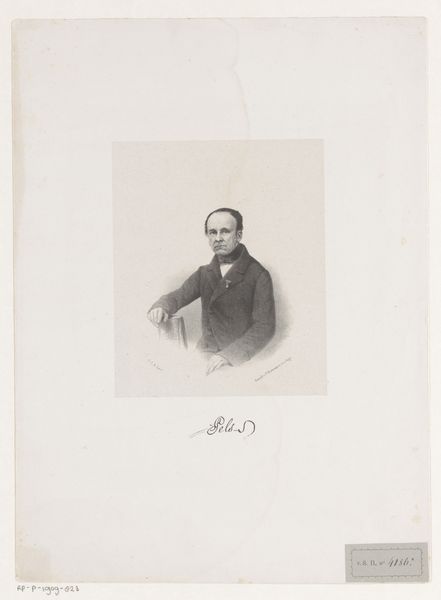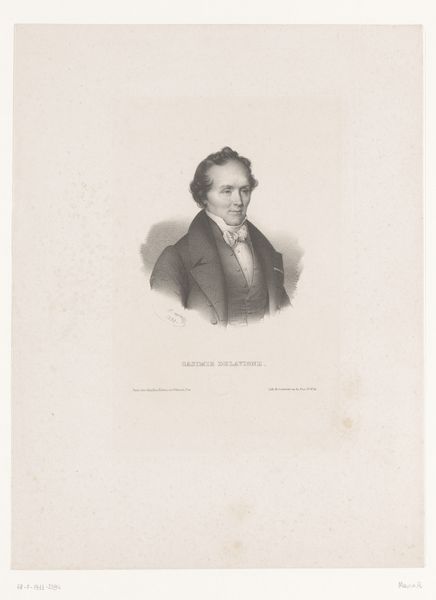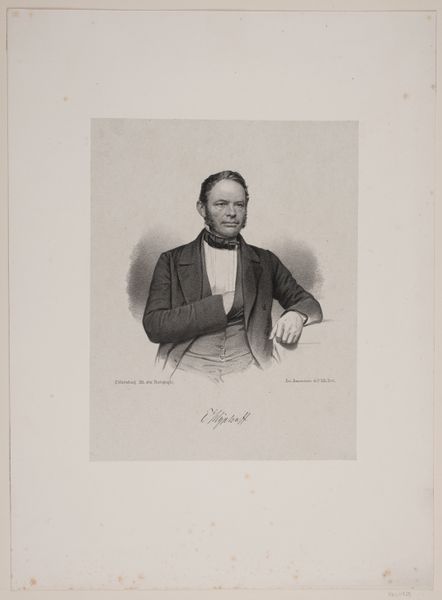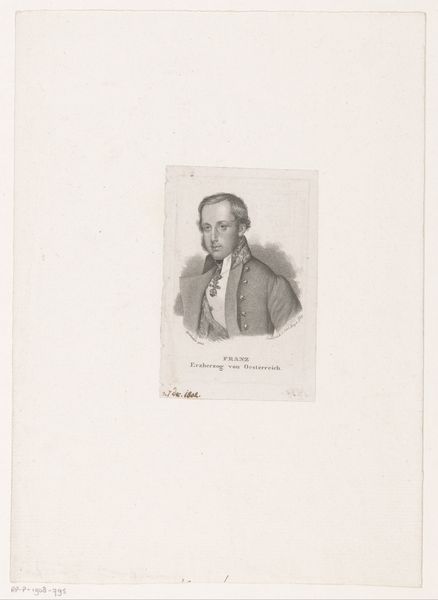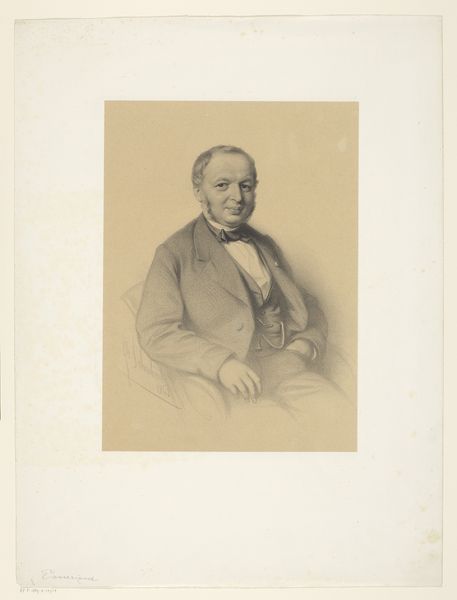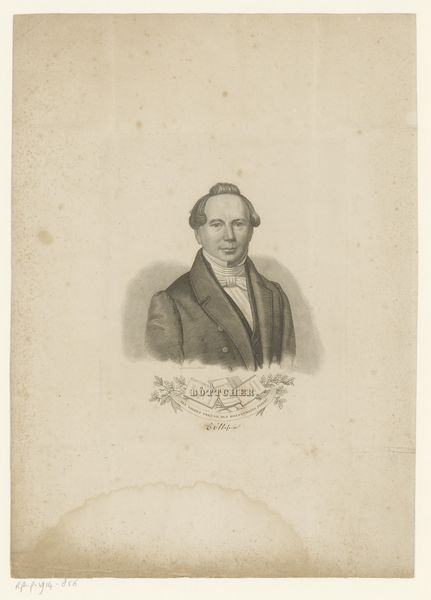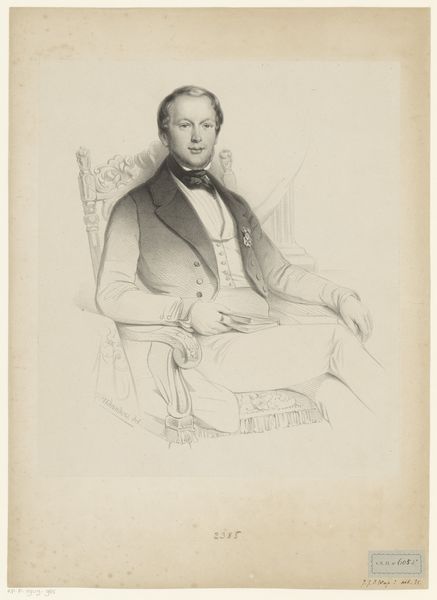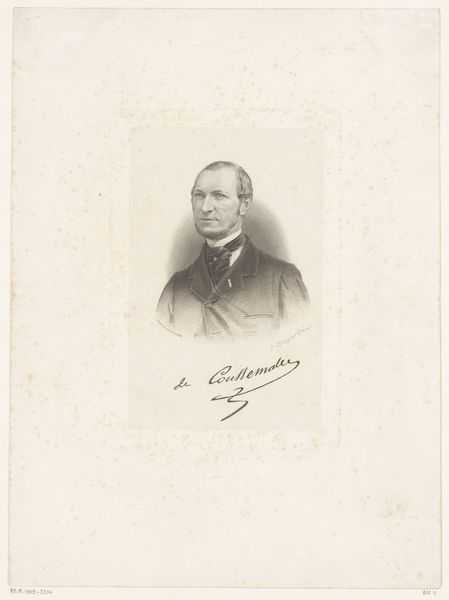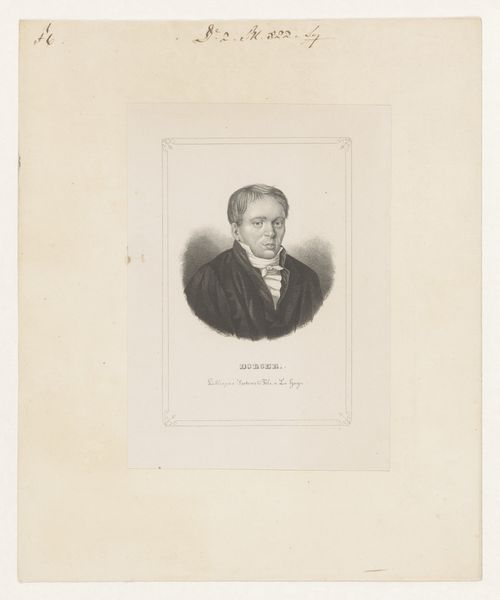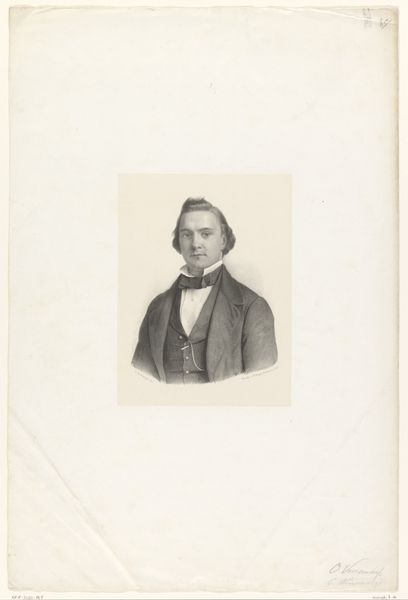
drawing, pencil
#
portrait
#
drawing
#
pencil drawing
#
pencil
#
academic-art
#
realism
Dimensions: height 542 mm, width 446 mm
Copyright: Rijks Museum: Open Domain
Curator: This drawing, "Portret van een onbekende man," dating back to 1847, is the work of Johann Georg Weinhold. The medium is graphite pencil, masterfully rendered. My initial impression is one of profound understatement. There's a subtle melancholy clinging to this portrayal. Editor: It's the stark realism that grabs me, especially the almost clinical precision of the light across his face. Note the geometry—the strong diagonal of his coat, softened by the oval vignette. Curator: The stark lighting contributes to the solemn air, highlighting his direct gaze. His pose, leaning casually on the chair back, feels staged, a careful balance between informality and respectability. He projects the image of an everyman rising to some level of prominence within society. Editor: Absolutely. The symbols of bourgeois ascent are here, if we consider his dark tailored coat, the high collar, and carefully groomed hair. This man understands presentation, image, perhaps the need to be taken seriously. His hand resting upon the chair reads as deliberate ease, yet it appears rather self-conscious, the embodiment of aspiring. Curator: Weinhold's use of pencil, though a relatively simple medium, conveys a surprising range of textures. Look at the difference in handling between the soft shading of the face and the crisper lines defining his attire. He evokes presence by building from darkness towards light. It is more than technique; there is emotional intelligence involved. Editor: What's captivating to me is the anonymity, the ‘onbekende man’ referenced in the title. The absence of an identifier paradoxically amplifies the portrait's resonance, transforming him into a cipher, representing a class of person at a very specific moment in societal shift. Curator: In seeing his namelessness, are we meant to reflect on the transience of identity itself, especially the identities forged and performed as self-representation? Weinhold challenges us to look beyond individual biography. Editor: Perhaps. It's a quiet subversion, offering the sitter as symbolic stand-in. His visual absence haunts us, becoming a mirror reflecting our aspirations. Curator: Indeed. Thank you for so eloquently articulating the power of implication. I will consider him with newly widened perspective going forward. Editor: A pleasure. It has highlighted, for me, how such technical facility combined with considered staging elevates even a simple portrait into something far more powerful.
Comments
No comments
Be the first to comment and join the conversation on the ultimate creative platform.
